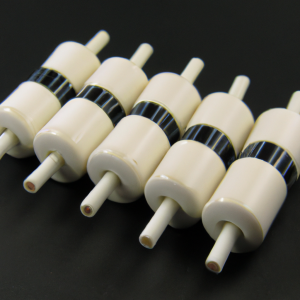Fuse is a kind of component specially set in the circuit of the weak link sensitive to current, in the normal operation of the circuit, it has no effect on the protected circuit, its resistance value is small, no power consumption. When the circuit is abnormal, there is too much current or short circuit phenomenon, it can quickly cut off the power, protect the circuit and other components. There are many types of fuse, commonly used fuse can be divided into glass tube fuse (low resolution), ceramic tube fuse (high resolution) and polymer self recovery fuse (PPTC plastic polymer made) three types. What is the difference between glass tube fuse and ceramic tube fuse?
First, the material of the tube body is different, one is glass, the other is ceramic.
Second, the explosion-proof performance of ceramic tube fuse is better than that of glass tube fuse. Ceramic tube fuse is not easy to break, glass tube fuse is easy to break. However, ceramic tube fuse also has a disadvantage, that is, our eyes can not see whether the ceramic tube fuse short circuit, but the inside of the glass tube fuse can be seen.
Third, ceramic tube fuses have higher overcurrent than glass tube fuses. The quartz sand in the ceramic tube can be cooled and extinguished. When the current exceeds the nominal capacity, the glass tube fuse cannot replace the ceramic tube fuse, or it will lose its protective effect. Therefore, glass tube fuses are usually used on low current lines and ceramic fuses are usually used on high current lines because of the difference in overcurrent.
Fourth, fuses are thermal effect, ceramic tube fuse has good heat dissipation, and glass tube fuse heat dissipation is not good, so the current of ceramic tube fuse is larger than the glass tube.
The two are not interchangeable.
Post time: Apr-17-2023
